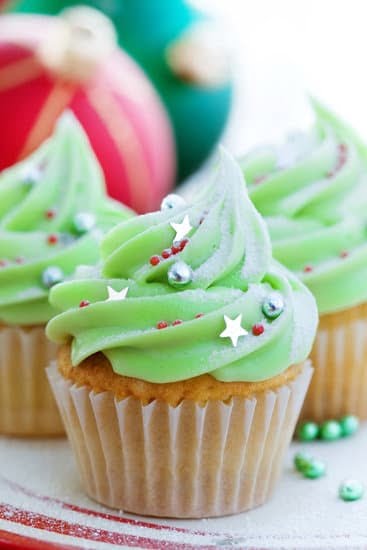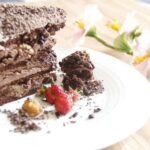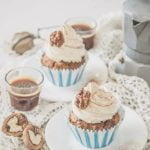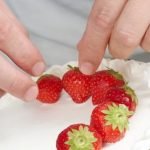Are you interested in learning how to decorate a dummy cake? Whether you’re a professional baker looking to hone your skills or a beginner eager to practice decoration techniques, decorating a dummy cake can be incredibly beneficial. In this article, we will explore the concept of a dummy cake, its purpose, and the advantages of using it as a practice tool for cake decorating.
A dummy cake, also known as a fake cake or display cake, is essentially a non-edible replica of a real cake. It is typically made from materials such as Styrofoam or plastic and can be used as a decorative centerpiece for events or as a practice canvas for aspiring pastry chefs. The primary purpose of a dummy cake is to showcase intricate designs and decorations without the constraints of perishable ingredients.
One key benefit of decorating a practice cake is the ability to experiment with different techniques and styles without the pressure of working on an actual edible cake. This allows decorators to refine their skills, try out new ideas, and gain confidence in their abilities.
Additionally, decorating a dummy cake provides an opportunity to create stunning visual displays that can be showcased at weddings, parties, and other special occasions. Throughout this article, we will delve into the steps and techniques for transforming a plain dummy cake into an eye-catching work of art.
Materials Needed
When it comes to decorating a dummy cake, having the right tools and supplies is essential for achieving professional-looking results. Whether you are a beginner or an experienced decorator, there are certain materials needed to bring your creative vision to life on a practice cake. To get started, you will need fondant, icing, piping bags, edible colors, various types of brushes, and other embellishments such as edible pearls or sprinkles.
Fondant is a key ingredient for creating smooth and flawless finishes on dummy cakes. It can be rolled out and draped over the cake to create a polished look or shaped into intricate designs for more elaborate decorations. Icing is also essential for both adhering fondant to the cake and creating decorative elements such as swirls, flowers, and borders.
Piping bags come in handy for adding intricate details using royal icing or buttercream. These bags allow for precision when piping delicate designs onto the dummy cake. Edible colors in gel or powder form are used to tint fondant and icing to achieve custom shades that complement the overall design. In addition to these essentials, having various types of brushes will help with applying edible luster dust, painting details on fondant, or adding color accents.
To elevate your decoration game further, consider incorporating additional embellishments like edible pearls, dragees, or sugar flowers to add depth and visual interest to your dummy cake. By having these tools and supplies ready in your decorating kit, you’ll be well-equipped to bring any design idea to life on a practice cake while perfecting your skills in the process.
As you gather all the necessary materials for decorating a dummy cake, keep in mind that quality tools can make a significant difference in achieving professional results. Investing in high-quality fondant, icing products from reputable brands can lead to smoother finishes and better workability. Similarly, investing in durable piping bags and precision piping tips can enhance your ability to create intricate designs with ease.
Whether it’s your first time taking on a decorating project with a dummy cake or if you’re looking to elevate your skills further by experimenting with new techniques and designs; having the right materials at hand is crucial for success. So be sure to stock up on everything you need before embarking on your next decorating adventure.
Preparing the Dummy Cake
Decorating a dummy cake is a great way to practice your skills and experiment with different designs without the pressure of a real cake. Before you can start adding decorative elements to the cake, you need to properly prepare the dummy cake for decorating. This step-by-step guide will walk you through the process of prepping the dummy cake, including smoothing the edges and creating a base for the decorations.
Smoothing the Edges
The first step in preparing a dummy cake for decoration is to ensure that its edges are smooth and free from any imperfections. Use sandpaper or a foam sanding block to gently smooth out any rough or uneven areas on the surface of the dummy cake. Be sure to work carefully and avoid applying too much pressure, as you don’t want to remove too much material from the dummy cake.
Creating a Base for Decorations
Once the edges of the dummy cake are smoothed out, it’s time to create a base for your decorations. This can be done by covering the entire surface of the dummy cake with fondant or icing, depending on your design preferences. The fondant or icing will provide a smooth and even canvas for adding decorative elements such as flowers, piping, or sculpted figures.
Adding Texture or Patterns (Optional)
If your design calls for texture or patterns on the surface of the dummy cake, this is the time to create them. You can use textured rolling pins, stencils, or embossing tools to add intricate details to the fondant or icing covering the dummy cake. Alternatively, you can also sculpt patterns directly into fondant if you prefer a more three-dimensional approach.
By following these steps and taking your time with each stage, you can ensure that your dummy cake is well-prepared for decorating, setting solid foundation that will elevate your final design.
Design Inspiration
When it comes to decorating a dummy cake, there are countless design ideas, themes, and styles to consider. Whether you prefer classic, modern, or seasonal options, the possibilities for creating stunning designs are endless. Classic designs may include elegant floral arrangements or intricate lace patterns, while modern options could feature geometric shapes and bold colors. Seasonal themes could range from cheerful spring motifs to festive winter scenes.
For those looking for a timeless and elegant design, consider adorning the dummy cake with delicate sugar flowers in soft pastel hues. These classic decorations never go out of style and add a touch of romance to any occasion. Alternatively, for a more contemporary look, opt for sleek metallic accents or bold geometric patterns that can lend a modern flair to the cake.
If you’re decorating the dummy cake for a specific time of year or holiday, seasonal themes offer plenty of inspiration. For instance, during the fall season, you might incorporate warm tones and rustic elements such as leaves and pumpkins into your design. Likewise, during the winter holidays, snowflakes, ornaments, and festive colors can bring the spirit of the season to life on your practice cake.
When considering different design ideas for decorating a dummy cake, it’s helpful to gather inspiration from various sources such as magazines, online galleries, and even nature itself. By exploring different styles and themes, you can expand your creativity and develop a diverse portfolio of decorating skills. Ultimately, the key is to experiment with different designs and techniques to find what best suits your personal style and preferences.
Decorating Techniques
Piping Techniques
Piping is a versatile decorating technique that involves using a piping bag to apply icing or frosting onto the dummy cake in various patterns and designs. To master this skill, start by practicing basic piping techniques such as bordering, outlining, and creating simple shapes.
As you gain confidence, you can experiment with more intricate designs and patterns. Remember to use the right consistency of icing for different types of piping, such as stiff icing for creating flowers and soft icing for writing.
Fondant Sculpting
Fondant sculpting allows you to create three-dimensional decorations and figurines for your dummy cake. To begin, knead the fondant until it’s pliable, then shape it into the desired form using your hands or sculpting tools. You can also use molds to create more complex shapes. Whether you’re crafting realistic looking flowers or whimsical characters, fondant sculpting adds an extra layer of creativity to your cake decorating skills.
Stenciling and Airbrushing
Stenciling and airbrushing are great techniques for adding intricate details and designs to a dummy cake. Stencils come in a variety of patterns and can be used with powdered sugar or food coloring sprays to create stunning visuals on the cake’s surface. Airbrushing, on the other hand, involves using an airbrush machine to apply food colorings in a controlled manner, allowing for smooth gradients and blending effects. Both methods add depth and dimension to your cake designs.
By mastering these various decorating techniques – piping, fondant sculpting, stenciling, and airbrushing – you can elevate the visual appeal of your dummy cakes and develop a diverse set of skills that will benefit your future real cake projects. Experiment with different combinations of these techniques to discover unique design possibilities and unleash your creativity in cake decorating.
Step-by-Step Decorating Process
Decorating a dummy cake can be a fun and creative process, allowing you to practice your decorating skills without the pressure of it being an actual edible cake. Here’s a step-by-step guide on how to decorate a dummy cake with detailed instructions for each stage:
1. Choose a Theme: Before you begin decorating your dummy cake, decide on a theme or design inspiration. Whether it’s a classic wedding cake, a modern geometric pattern, or a seasonal holiday theme, having a clear idea of the design will guide your decorating process.
2. Covering the Cake: Start by covering the dummy cake with fondant or icing to create a smooth base for your decorations. Roll out the fondant or icing to the desired thickness and carefully drape it over the cake, smoothing out any wrinkles or air pockets.
3. Piping and Sculpting: Use piping bags and tips to add intricate designs such as lace patterns, floral details, or borders to your dummy cake. You can also sculpt fondant into various shapes and figures to personalize the design further.
4. Stenciling and Airbrushing: If you want to add more intricate details or create unique effects, consider using stencils and airbrushing techniques. This could include adding delicate patterns or shading with different colors for a more realistic look.
5. Adding Embellishments: To complete the decorating process, consider adding embellishments such as edible pearls, sugar flowers, or glitter for an extra touch of elegance.
Overall, decorating a dummy cake provides an excellent opportunity to practice different techniques and experiment with various designs before working on an actual edible cake. It allows you to refine your skills and unleash your creativity without any added pressure – so have fun with it.
Troubleshooting and Tips
Decorating a dummy cake is a great way to practice and hone your cake decorating skills without the pressure of working on a real cake. However, just like with any form of art or craft, there are common challenges that decorators may encounter when working with dummy cakes.
In this section, we will address some of these challenges and provide valuable tips for overcoming them. Additionally, we will offer expert advice to help you achieve professional-looking results in your dummy cake decorations.
One common challenge when decorating a dummy cake is achieving smooth and flawless fondant or icing. Air bubbles, cracks, and uneven surfaces can mar the overall appearance of the cake.
One tip for overcoming this challenge is to ensure that the dummy cake is properly prepared before applying the fondant or icing. Use sandpaper to smooth out any rough edges and imperfections, and apply a layer of royal icing as a base to create a smooth surface for the fondant or icing to adhere to.
Another challenge that decorators often face is creating clean and precise designs with piping or sculpted fondant. To overcome this challenge, it’s essential to practice good technique and invest in quality tools such as piping bags, tips, and fondant sculpting tools. Additionally, taking the time to sketch out your design beforehand can help ensure that your decorations are symmetrical and well-proportioned.
Expert advice for achieving professional-looking results in dummy cake decorations includes paying attention to detail, being patient, and continuously refining your skills through practice. Professional decorators recommend studying different design styles and techniques, experimenting with new ideas, and seeking inspiration from other experienced decorators.
| Common Challenge | Tips for Overcoming |
|---|---|
| Achieving Smooth Fondant/Icing | Prepare the dummy cake properly; use sandpaper; apply royal icing as a base |
| Clean & Precise Designs with Piping/Sculpted Fondant | Practice good technique; invest in quality tools; sketch out designs beforehand |
| Expert Advice for Professional-Looking Results | Pay attention to detail; be patient; continuously refine skills through practice |
Final Touches and Display
When it comes to decorating a dummy cake, the final touches and display play a crucial role in making the entire design come together. Adding embellishments to the cake can take it from ordinary to extraordinary, while displaying the finished product effectively can showcase your expertise and creativity. In this section, we will discuss some tips for adding those final touches and how to display your decorated dummy cake for maximum impact.
One of the most popular ways to add embellishments to a dummy cake is by using edible decorations such as sugar flowers, edible metallic paint, or hand-piped designs. These elements can elevate the overall look of the cake and make it truly stand out. Additionally, non-edible embellishments like ribbons, lace, or crystals can also be used to enhance the aesthetic appeal of the cake.
When it comes to displaying a decorated dummy cake, consider using a sturdy and visually appealing cake stand that complements the design of the cake. The right stand can elevate the overall presentation and make a striking visual impact. Another option is to showcase the cake under proper lighting or within an attractive backdrop that enhances its beauty.
In addition, consider taking professional photographs of your finished dummy cake to create a portfolio of your work or share it on social media platforms. A well-styled photoshoot can further enhance the visual appeal of your creation and attract potential clients if you are in the business of custom cakes.
| Embellishments | Display |
|---|---|
| Edible decorations like sugar flowers | Use a sturdy and visually appealing stand |
| Non-edible embellishments like ribbons or lace | Showcase under proper lighting or within an attractive backdrop |
| Professional photographs for portfolio or social media sharing | Elevate visual appeal with a well-styled photoshoot |
Conclusion and Next Steps
In conclusion, learning how to decorate a dummy cake can be a fun and rewarding experience for both beginners and experienced bakers alike. The process allows for creative expression and experimentation without the pressure of working on a real cake. By following the step-by-step guide outlined in this article, aspiring decorators can gain valuable skills and confidence to tackle actual cake decorating projects with ease.
To further improve decorating skills, it is recommended to continue practicing with dummy cakes and exploring new design ideas and techniques. Additionally, taking online courses or attending workshops led by experienced cake decorators can provide valuable insights and guidance. Joining baking and decorating communities or forums can also offer support, inspiration, and opportunities to learn from others who share the same passion.
Ultimately, mastering the art of decorating a dummy cake requires patience, practice, creativity, and a willingness to learn from both successes and challenges. By embracing the journey of honing decorating skills, individuals can elevate their craft and create stunning edible works of art that will delight friends, family, or clients for any occasion.

Welcome to our cake decorating blog! My name is Destiny Flores, and I am the proud owner of a cake decorating business named Cake Karma. Our mission is to provide delicious, beautiful cakes for all occasions. We specialize in creating custom cakes that are tailored specifically to each customer’s individual needs and tastes.





